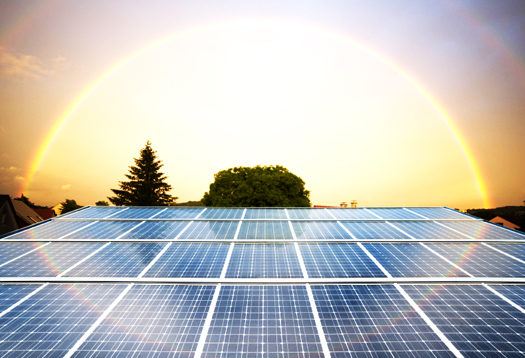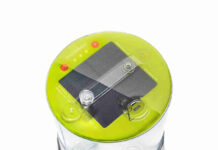
It has long been thought that conversion efficiency of solar cells cannot exceed 34 percent for a single material or less than about 45 percent for the most efficient cells. A thermodynamic limit is responsible for this practical limitation.
By clever light management, however, efficiency as high as 70 percent is achievable. Harry Atwater, applied physicist at California Institute of Technology (Caltech) and his Dutch colleague Albert Polman describe how this can be done in the journal Nature Materials.
A solar cell is a device that converts sunlight into electrical power. This conversion process, however, is typically not very efficient: a conventional silicon solar cell commercially available today converts only 15-20 percent of the energy of the sunlight to electricity and a large fraction (80-85 percent) is lost as heat.
Blue and green light are converted to electricity with an efficiency less than 50 percent, while infrared light is not absorbed by a silicon solar cell at all. The highest record efficiency ever realized by a silicon solar cell is only 27 percent.
Light that is not converted in the solar cell leads to thermodynamic disorder known as entropy and therefore a reduced cell voltage. As a result, the maximum achievable efficiency is limited to 34 percent, the so-called Shockley-Queisser limit.
Also, the incomplete trapping of light inside the solar cell and defects in the solar cell material’s crystal structure cause a loss in efficiency.
By managing the light in a clever way, a large portion of these problems can be solved. By using specially engineered nanostructures, printed on the solar cells’ surface, the light can be better trapped.
In their article, Atwater and Polman describe several recipes with which these improvements can be realized. They are based on the integration of photonic nanostructures and circuits on the solar cell. The inspiration for some of these ideas comes from the optical integrated circuit technology, where structures to guide and control light are routinely made.
Atwater, who directs the DOE Light-Material Interactions Energy Frontier Research Center at Caltech, notes, “Before 2000 scientists and technologists had developed materials and devices with high electronic quality, but little attention was paid to optical design.
“But in the last decade, revolutions in photonic material design and large-area nanostructure fabrication have given researchers and technologists tools to enable a new era of ultrahigh efficiency photovoltaics.”
Also, adds Atwater, “historically, the solar cell community has assumed that cells could either be made with low efficiency and low cost, or high efficiency and high cost. It’s now apparent that this is a false dichotomy, and that high efficiency and low cost are both achievable.”
Polman, who is lab director of the FOM Institute for Atomic and Molecular Physics in Amsterdam, notes, “The solar cell community has driven down solar panel cost, yet is very conservative and has not boosted efficiency significantly.
“But solar panels with a high efficiency take up much less space, because you need fewer panels to generate the same amount of power. That saves costs of land, installation, and infrastructure. With a slightly more complex solar cell it becomes possible to convert all colors of the light from the sun to electricity, and an efficiency of up to 70 percent is achievable.”



